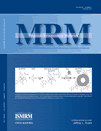A fast Edge-preserving Bayesian reconstruction method for Parallel Imaging applications in cardiac MRI
Abstract
Among recent parallel MR imaging reconstruction advances, a Bayesian method called Edge-preserving Parallel Imaging reconstructions with GRAph cuts Minimization (EPIGRAM) has been demonstrated to significantly improve signal-to-noise ratio when compared with conventional regularized sensitivity encoding method. However, EPIGRAM requires a large number of iterations in proportion to the number of intensity labels in the image, making it computationally expensive for high dynamic range images. The objective of this study is to develop a Fast EPIGRAM reconstruction based on the efficient binary jump move algorithm that provides a logarithmic reduction in reconstruction time while maintaining image quality. Preliminary in vivo validation of the proposed algorithm is presented for two-dimensional cardiac cine MR imaging and three-dimensional coronary MR angiography at acceleration factors of 2–4. Fast EPIGRAM was found to provide similar image quality to EPIGRAM and maintain the previously reported signal-to-noise ratio improvement over regularized sensitivity encoding method, while reducing EPIGRAM reconstruction time by 25–50 times. Magn Reson Med, 2010. © 2010 Wiley-Liss, Inc.




